Benefits of Using Natural Plant Dyes in your Garden
In recent years, there has been a significant shift towards sustainability and eco-friendly practices, especially in gardening. One of the most exciting ways to embrace this trend is by incorporating natural plant dyes into your gardening practices. Not only do these dyes offer a vibrant and unique palette, but they also come with a plethora of benefits that can enhance both your garden and your creative projects. Imagine walking through your garden and seeing a spectrum of colors derived from the very plants you nurture; it’s like having an artist's palette right at your fingertips!
Natural dyes are derived from the pigments found in plants, making them a sustainable alternative to synthetic dyes that often come with a hefty environmental cost. When you choose to use natural dyes, you’re not just making a choice for yourself; you’re contributing positively to the planet. This article explores the various advantages of using natural plant dyes, from their ecological benefits to their aesthetic appeal and creative potential. So, let’s dive into the colorful world of plant-based dyes and discover how they can transform your gardening experience!
One of the primary benefits of using natural plant dyes is their eco-friendliness. Unlike synthetic dyes, which can be laden with harmful chemicals, natural dyes are derived from plants, making them a safer choice for the environment. By utilizing local flora in your dyeing process, you not only reduce chemical pollution but also promote biodiversity in your garden. This practice encourages the growth of native plants, which play a vital role in supporting local ecosystems. You might be surprised to learn that many common garden plants can double as dye sources, allowing you to create stunning colors while actively contributing to the health of your environment.
When it comes to crafting and textile arts, health should always be a priority. Natural plant dyes offer a significant advantage in this area as they minimize exposure to harmful chemicals often found in synthetic alternatives. For those with sensitive skin or allergies, this can make a world of difference. By opting for plant-based options, you are choosing a healthier path for your crafting projects. Think of it as a gentle hug for your skin, one that avoids the harshness of synthetic dyes.
Many natural dyes are not only safe for the environment but are also gentle on the skin. For instance, dyes derived from plants like avocado pits and marigold flowers are known for their skin-friendly properties. These options are perfect for those who love to create textiles or crafts that will be in direct contact with the skin. Imagine wrapping yourself in a scarf dyed with the soft hues of natural ingredients—it's not just beautiful, but also safe!
While natural dyes are generally safer, it’s important to note that some individuals may still experience reactions. Just like with any natural product, understanding potential allergens is crucial. For example, plants such as madder can cause reactions in sensitive individuals. Always be aware of your personal sensitivities when exploring the world of natural dyes.
To ensure a safe crafting experience, conducting patch tests can help identify any sensitivities to natural dyes. Here’s a simple guideline to perform these tests effectively:
- Choose a small area of skin, preferably on your inner arm.
- Apply a small amount of the dye solution.
- Wait for 24 hours to see if any reaction occurs.
By taking this precaution, you can enjoy your creative endeavors without worry!
Natural dyes not only enhance your crafting experience but also contribute to sustainable gardening practices. By promoting the use of native plants, you support local ecosystems and help reduce waste. This practice encourages a cycle of growth and regeneration within your garden, making it a thriving habitat for various species. Think of your garden as a small ecosystem where every plant plays a role—by incorporating natural dyes, you’re giving back to this cycle.
One of the most captivating aspects of natural plant dyes is their unique and rich colors. Unlike synthetic dyes, which can often produce uniform shades, natural dyes offer a stunning variety that changes with the seasons and the maturity of the plants. This variability not only enhances the beauty of textiles and crafts but also adds a dynamic element to your gardening experience. Imagine dyeing a fabric in the spring and then again in the fall, only to find that the colors have transformed beautifully with the changing seasons!
Different plants yield varying hues, allowing for a diverse palette that can be tailored to your personal style. For instance, yellow onion skins produce a warm golden hue, while indigo offers deep blues. This range of colors achievable through various plant sources means that you can create one-of-a-kind pieces that truly reflect your creativity. It’s like being a painter, but instead of a canvas, you have the fabric of your imagination!
The colors of natural dyes can change with the seasons, offering a dynamic aspect to gardening. As plants mature and the seasons shift, the hues you can achieve will vary, providing a fresh take on your projects throughout the year. This seasonal variability not only keeps your crafting exciting but also allows you to connect more deeply with the rhythms of nature. It’s a reminder that just like in life, change can be beautiful!
Natural plant dyes open up a world of creativity in gardening and crafting. From textiles to home decor, the applications are endless. You can dye fabrics for clothing, create stunning wall hangings, or even craft unique greeting cards using plant-based colors. The versatility of plant-based colors allows you to explore different mediums, making every project an opportunity to express your individuality. So why not let your imagination run wild? Your garden can be a source of inspiration and creativity!
- What plants can I use for natural dyes? You can use a variety of plants, including marigolds, avocado pits, and onion skins.
- Are natural dyes safe for sensitive skin? Yes, many natural dyes are gentle on the skin, but it’s essential to perform patch tests.
- How do I make natural dyes? You can create natural dyes by boiling plant materials in water and straining the liquid.
- Can I use natural dyes on all fabrics? Natural dyes work best on natural fibers like cotton, wool, and silk.

Eco-Friendly Alternatives
When it comes to gardening, the choices we make can have a profound impact on our environment. One of the most significant shifts we can embrace is the use of natural plant dyes instead of their synthetic counterparts. Not only do these dyes offer a vibrant array of colors, but they also serve as a sustainable alternative that helps to reduce chemical pollution. Imagine walking through a garden where the colors are not only beautiful but also come from the very plants that surround you. This not only enhances the aesthetic appeal of your garden but also promotes biodiversity.
By utilizing local flora, gardeners can significantly contribute to the health of their ecosystems. When you choose to extract colors from plants that are native to your area, you’re not just creating art; you’re also fostering a deeper connection with your environment. This practice encourages the growth of native plants, which in turn supports local wildlife and helps maintain ecological balance. Think of it as a win-win situation: you get stunning colors for your projects while also playing a vital role in protecting your local ecosystem.
Moreover, the process of creating dyes from plants can be incredibly rewarding. It allows you to engage with your garden on a deeper level, transforming simple gardening into a creative exploration. For instance, you might discover that the marigolds in your garden yield a golden hue, while the indigo plants produce a deep blue. Each color tells a story and reflects the unique characteristics of the plants you’ve nurtured. This connection not only enriches your gardening experience but also instills a sense of pride in your creations.
In addition to the ecological benefits, using natural plant dyes can also lead to a reduction in waste. Many gardeners often find themselves with excess plant material—leaves, stems, and flowers—that can easily be repurposed into beautiful dyes. Instead of discarding these materials, why not transform them into something useful? This approach not only minimizes waste but also encourages a mindset of sustainability and resourcefulness.
To illustrate the impact of choosing natural dyes, consider the following comparison:
| Aspect | Synthetic Dyes | Natural Plant Dyes |
|---|---|---|
| Environmental Impact | High pollution and toxicity | Low pollution, promotes biodiversity |
| Health Risks | Potentially harmful chemicals | Generally safe, fewer allergens |
| Color Variability | Consistent but limited | Diverse and unique |
| Waste Reduction | High waste generation | Utilizes plant waste effectively |
As you can see, the benefits of switching to natural plant dyes are numerous and impactful. So, next time you're in your garden, think about how you can incorporate these eco-friendly alternatives into your practices. Not only will you be adding a splash of color to your life, but you’ll also be making a positive contribution to the environment!

Health Benefits
When it comes to crafting and textile arts, the of using natural plant dyes are a significant factor that many people often overlook. Unlike synthetic dyes, which can contain a cocktail of harmful chemicals, natural dyes are derived from plants, making them a safer choice for both the environment and our bodies. This is particularly important for individuals with sensitive skin or allergies, as exposure to synthetic dyes can lead to various health issues, including skin irritation and respiratory problems.
By opting for plant-based dyes, you're not just making a choice that benefits your artwork, but also one that promotes your well-being. Natural dyes are often free from toxic substances like heavy metals and synthetic additives, which can be found in many commercial dyes. This means that when you’re working with these dyes, you’re less likely to experience adverse reactions. For instance, many people have reported feeling more comfortable and at ease when using dyes made from plants like avocado pits or turmeric, which are known for their gentle properties.
Many natural dyes are not only safe but also skin-friendly. Plants such as madder root, indigo, and marigold have been traditionally used for dyeing textiles, and they offer a range of colors without the harshness of synthetic dyes. For those who love crafting, using these dyes can enhance your experience, allowing you to create beautiful pieces without worrying about skin irritation. In fact, some natural dyes even have soothing properties, making them ideal for sensitive skin.
While natural dyes are generally considered safer, it's important to note that some individuals may still experience reactions. Just like with any natural product, allergies can occur. For example, individuals may react to specific plants or their components. Understanding these potential allergens is crucial, especially if you're planning to use these dyes frequently. It’s always wise to do a little research or consult with a professional before diving into a new dyeing project.
To ensure that you can enjoy the benefits of natural dyes without the risk of irritation, conducting patch tests is highly recommended. This simple process involves applying a small amount of the dye to a discreet area of your skin and waiting 24 hours to see if any reaction occurs. Here’s how to perform a patch test effectively:
- Choose a small area of skin, preferably on your inner arm.
- Apply a small amount of the dye mixed with water.
- Cover it with a bandage to avoid accidental washing off.
- Wait for 24 hours and observe for any redness, itching, or irritation.
If there are no adverse reactions, you can feel confident in using that dye for your projects. This precautionary step can save you from discomfort and ensure that your creative endeavors remain enjoyable.
In summary, the of using natural plant dyes are compelling. They offer a safer alternative to synthetic dyes, minimize exposure to harmful chemicals, and can even provide soothing properties for the skin. By incorporating these dyes into your crafting and gardening practices, you're not only enhancing your creativity but also taking a step towards a healthier lifestyle.
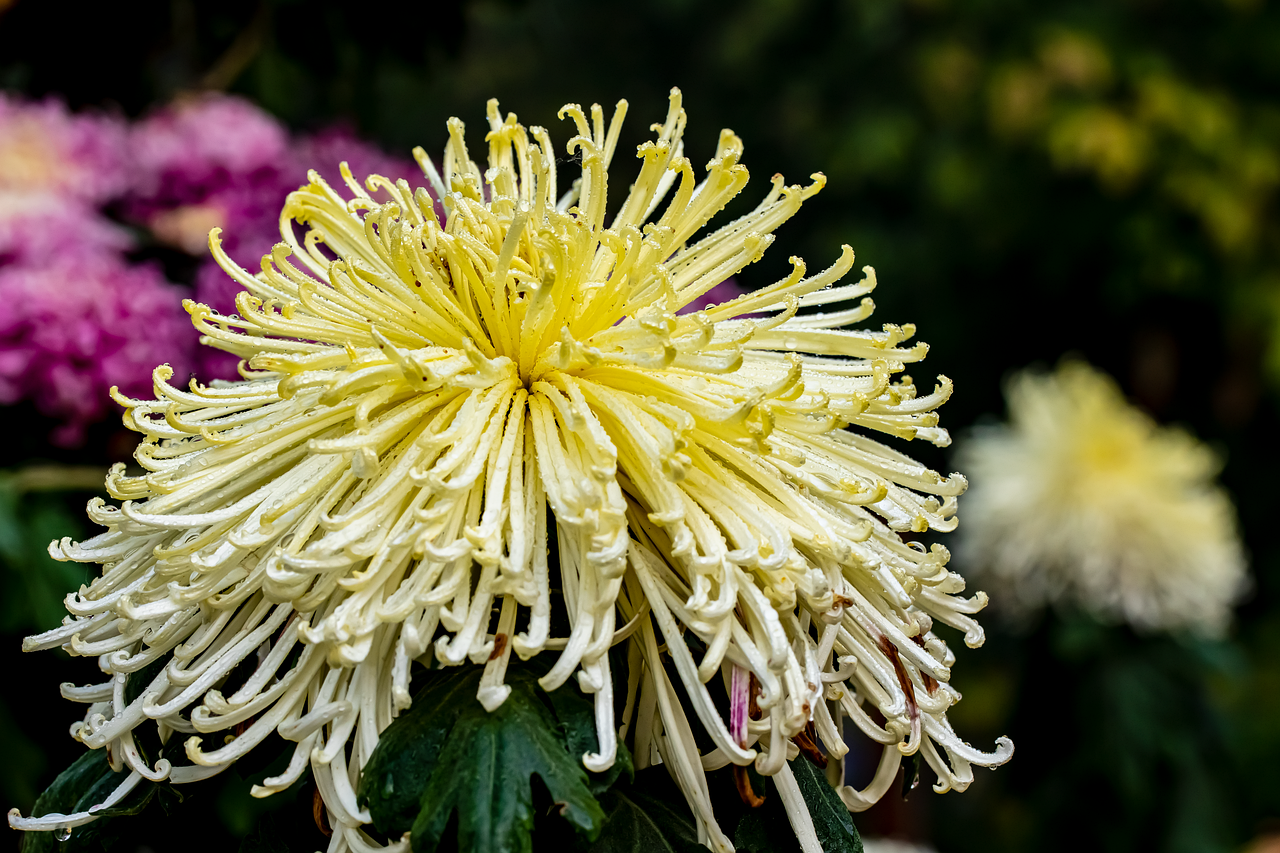
Skin-Friendly Options
When it comes to crafting and textile projects, the choice of materials can significantly impact not only the final product but also the well-being of those who use them. Natural plant dyes stand out as a remarkable option, particularly for individuals with sensitive skin. Unlike their synthetic counterparts, which can contain harsh chemicals and irritants, many natural dyes are derived from plants that have been used for centuries in various cultures for their gentle properties. For instance, dyes extracted from turmeric and madder root are not only vibrant but are also known for being skin-friendly.
One of the most appealing aspects of using natural dyes is that they often come from common garden plants or local flora. This means that not only can you enjoy the process of dyeing, but you can also feel good about using materials that are environmentally friendly and sustainable. For example,
- Avocado pits and skins yield a beautiful pinkish hue.
- Onion skins can produce a range of yellows and oranges.
- Black walnuts create rich browns and tans.
These plant sources are not just aesthetically pleasing; they also tend to be less irritating to the skin. This makes them ideal for projects that involve direct contact with skin, such as clothing or home textiles. However, it’s essential to remember that while many natural dyes are generally safe, individual reactions can vary. Some people may still experience sensitivity to specific plants, particularly if they have allergies. Therefore, it’s wise to be aware of your body’s reactions and to choose your materials thoughtfully.
In summary, opting for natural plant dyes not only enhances the beauty of your crafts but also prioritizes your skin's health. By incorporating these gentle yet vibrant dyes into your projects, you can enjoy a more holistic crafting experience that aligns with your values of sustainability and well-being.
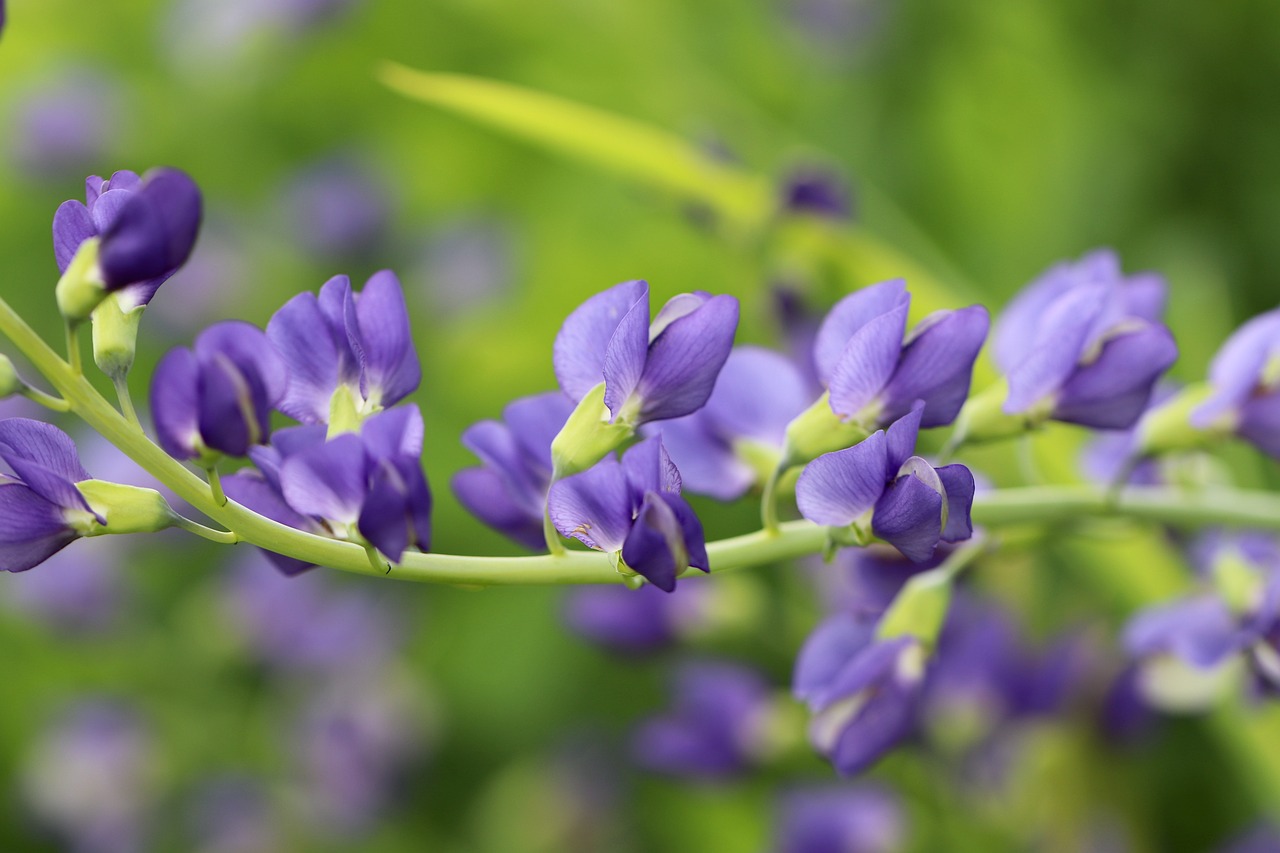
Common Skin Reactions
While natural dyes are often celebrated for their eco-friendliness and vibrant colors, it's important to recognize that they can still cause skin reactions in some individuals. Just like with any natural product, our bodies can react differently. For example, some people might experience mild irritation or even allergic reactions when their skin comes into contact with certain plant-based dyes. This is particularly true for individuals with sensitive skin or those who have allergies to specific plants.
Common reactions can include:
- Redness: A common sign of irritation, often appearing shortly after exposure.
- Itching: This can range from a mild annoyance to a more intense urge to scratch.
- Rashes: Some individuals may develop rashes that require treatment or avoidance of the dye source.
It’s crucial to be aware of these potential reactions, especially if you plan to use natural dyes for textiles that will be in close contact with your skin. For instance, dyes derived from plants like madder or indigo are known for their rich colors, but they can also cause reactions in sensitive individuals. Understanding which plants you are working with and their potential effects on your skin can help you make informed choices.
To mitigate risks, it’s advisable to conduct a patch test before fully committing to a dyeing project. This involves applying a small amount of the dye to a discreet area of skin and monitoring it for any adverse reactions over 24 hours. If you notice any irritation or discomfort, it may be best to avoid using that particular dye. By taking these precautions, you can enjoy the beauty of natural dyes while keeping your skin safe and healthy.
1. Can everyone use natural plant dyes?
While many people can use natural plant dyes without any issues, those with sensitive skin or known allergies should proceed with caution and conduct patch tests.
2. How can I identify if I am allergic to a specific dye?
Performing a patch test is the best way to identify any potential allergies. Apply a small amount of the dye to a small area of skin and wait for 24 hours to see if any reaction occurs.
3. Are there any common plants that are known to cause skin reactions?
Yes, some plants like ragweed, comfrey, and certain types of berries can cause reactions in sensitive individuals. Always research the plants you plan to use.
4. What should I do if I have a reaction to a natural dye?
If you experience a reaction, wash the area with mild soap and water, and consider applying a soothing lotion or cream. If the reaction is severe, seek medical attention.
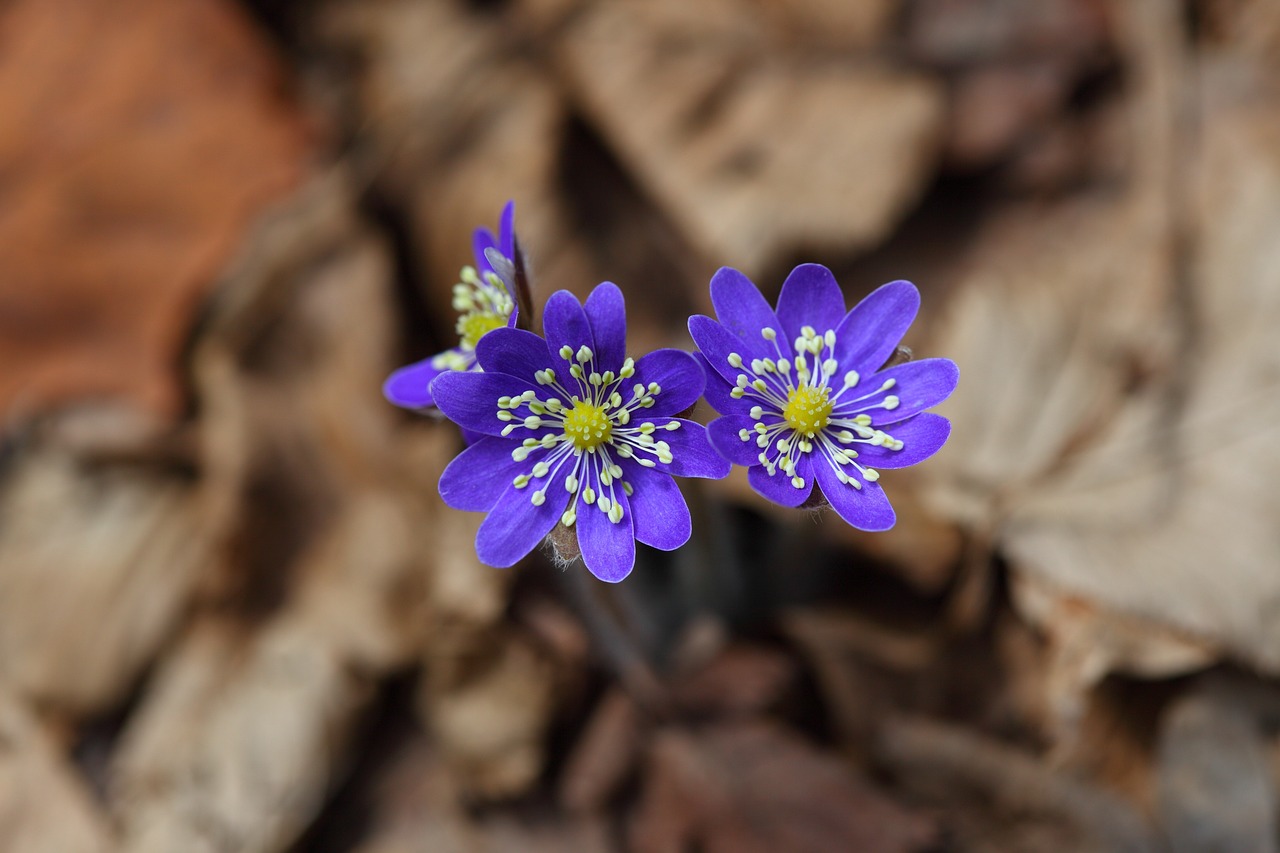
Testing for Sensitivity
When it comes to using natural plant dyes, ensuring that you’re not sensitive to them is crucial for a safe and enjoyable crafting experience. Many people assume that because these dyes are derived from nature, they are completely safe. However, just like with any natural substance, there can be exceptions. Conducting a patch test is a simple yet effective way to identify any potential reactions before fully immersing yourself in your dyeing projects.
To perform a patch test, start by selecting a small area of skin, preferably on your inner arm or wrist, which is less exposed to irritants. Prepare a small sample of the dye you intend to use and apply it to that area. Cover it with a bandage and leave it for 24 hours. After this period, carefully remove the bandage and observe the area for any signs of irritation, such as redness, itching, or swelling. If you notice any adverse reactions, it’s best to avoid using that particular dye on larger areas or on fabrics that will come into contact with your skin.
It’s also beneficial to keep a record of your patch tests. You can create a simple table to track which dyes you've tested, the results, and any reactions you experienced. This not only helps you remember which dyes are safe for you but also assists others who may be interested in the same dyes. Here’s a simple example:
| Dye Source | Date Tested | Reaction | Notes |
|---|---|---|---|
| Turmeric | 2023-10-01 | No Reaction | Safe for use |
| Avocado Pit | 2023-10-02 | Redness | Avoid for skin contact |
Remember, everyone's skin is different, and what works for one person may not work for another. If you have a history of allergies or sensitive skin, it’s even more important to take these precautions. Always prioritize safety to ensure that your creative pursuits are both fun and free from discomfort.
- What are natural plant dyes? Natural plant dyes are colorants derived from plants, including leaves, roots, fruits, and flowers, used to color textiles and crafts.
- Are natural dyes safe for all skin types? While many natural dyes are skin-friendly, it's essential to conduct a patch test to check for sensitivities.
- How can I store natural dyes? Store natural dyes in airtight containers, preferably in a cool, dark place to preserve their vibrancy.
- Can I mix different natural dyes? Yes! Mixing natural dyes can create unique colors, but always test the mix on a small fabric piece first.

Benefits for the Environment
When we talk about gardening, it's not just about planting seeds and watering them; it's about creating a thriving ecosystem. Natural plant dyes play a pivotal role in promoting sustainable gardening practices. By incorporating these dyes into your gardening routine, you’re not just beautifying your textiles and crafts, but you're also contributing positively to the environment. One of the most significant benefits is the promotion of biodiversity. By using local plants for dyeing, you support native flora, which in turn helps maintain the balance of local ecosystems.
Moreover, natural dyes are often derived from plants that can be grown in your own garden, reducing the need for imported materials. This not only cuts down on carbon emissions associated with transportation but also encourages the cultivation of native species. When you grow your own dye plants, you’re engaging in a practice that fosters a deeper connection with nature. It’s like having a conversation with your garden, where each plant tells a story through its color.
Another environmental benefit is the reduction of waste. Many plants used for natural dyes can be sourced from kitchen scraps or garden trimmings. For instance, onion skins, avocado pits, and even coffee grounds can be transformed into beautiful dyes. This practice not only minimizes waste but also encourages creativity in how we use our resources. Imagine turning what would typically be discarded into vibrant colors for your fabrics! It’s a win-win situation where you’re reducing landfill contributions while enhancing your artistic endeavors.
Additionally, using natural dyes can significantly lower the chemical footprint associated with textile production. Synthetic dyes often contain harmful substances that can leach into waterways, harming aquatic life and disrupting ecosystems. In contrast, natural dyes are biodegradable and less likely to cause environmental harm. By choosing plant-based options, you are effectively saying no to chemical pollution and yes to a healthier planet.
To give you a clearer picture of the environmental impact, consider this table that compares natural dyes to synthetic ones:
| Aspect | Natural Dyes | Synthetic Dyes |
|---|---|---|
| Source | Plant-based, renewable | Petrochemical-based, non-renewable |
| Biodegradability | Biodegradable | Non-biodegradable |
| Environmental Impact | Low | High (pollution, toxic waste) |
| Health Risks | Minimal | Potentially harmful chemicals |
In summary, the benefits of using natural plant dyes extend far beyond aesthetics. They promote biodiversity, reduce waste, and minimize harmful environmental impacts. By choosing natural dyes, you’re not just making a choice for your garden; you’re making a choice for the planet. So, the next time you think about dyeing fabric or crafting a beautiful piece of art, remember that your choices can lead to a more sustainable and vibrant world.
- What are natural plant dyes? Natural plant dyes are colorants derived from plants, including flowers, leaves, roots, and fruits, which are used to color textiles and other materials.
- Are natural dyes safe for the environment? Yes, natural dyes are generally more environmentally friendly than synthetic dyes, as they are biodegradable and often sourced from renewable materials.
- Can I use kitchen scraps for dyeing? Absolutely! Many kitchen scraps, such as onion skins and avocado pits, can be used to create beautiful natural dyes.
- How do I test for skin sensitivity to natural dyes? Conduct a patch test by applying a small amount of the dye to your skin and waiting 24 hours to see if any reaction occurs.
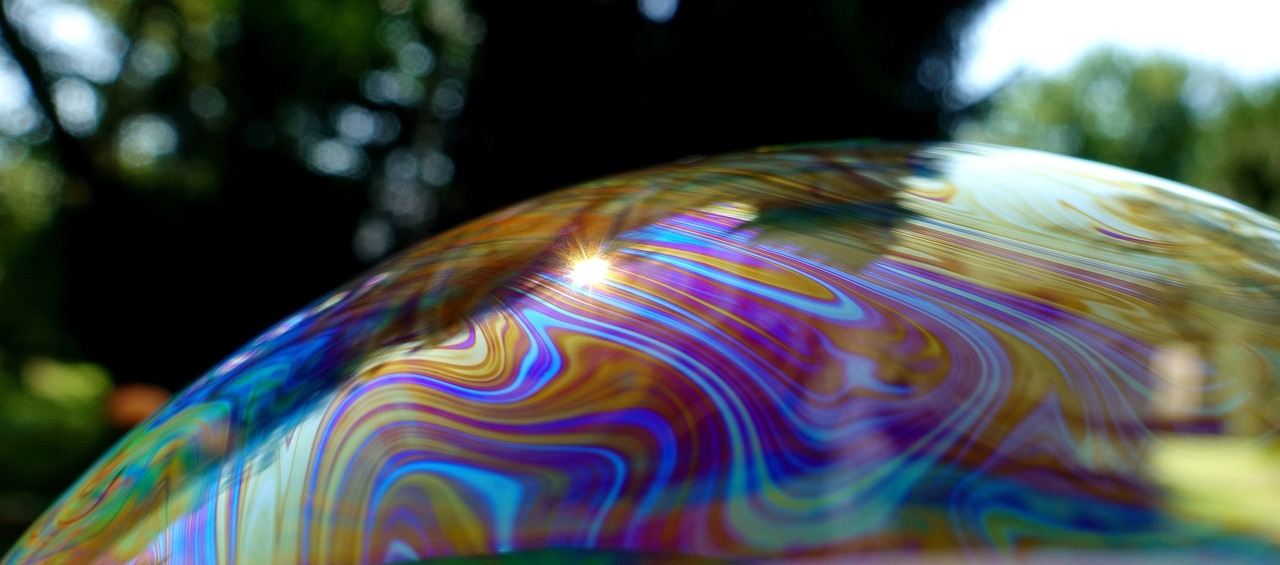
Aesthetic Appeal
When it comes to the world of gardening and crafting, the of natural plant dyes is simply unmatched. Imagine walking through a garden where the colors are not just vibrant, but alive, shifting and changing with the seasons. Natural dyes offer a unique palette that synthetic dyes simply cannot replicate. Each hue tells a story, reflecting the life cycle of the plants from which they are derived. For instance, the deep indigo from Indigofera tinctoria or the warm yellows from marigolds can transform ordinary fabrics into extraordinary pieces of art.
One of the most fascinating aspects of natural dyes is their color variability. Different plants yield a stunning array of colors, and even the same plant can produce different shades based on how it is processed. For example, madder root can create everything from soft pinks to deep reds, depending on the dyeing method and the pH of the water used. This variability allows artists and gardeners to experiment and create personalized shades that resonate with their individual styles.
Moreover, the seasonal changes in natural dyes add to their charm. As the seasons shift, so too do the colors available for dyeing. In spring, you might find yourself using fresh leaves and flowers that yield bright greens and yellows, while autumn might inspire you to collect fallen leaves that can produce rich browns and golds. This dynamic aspect of natural dyes not only enhances the beauty of textiles but also connects you to the rhythms of nature. It’s like having a living palette that evolves, reminding you of the beauty of change.
To illustrate the range of colors achievable through various plant sources, consider the following table:
| Plant Source | Color Achieved |
|---|---|
| Indigo | Deep Blue |
| Turmeric | Bright Yellow |
| Pomegranate | Golden Yellow to Brown |
| Beetroot | Rich Red |
| Avocado Pits | Pale Pink to Peach |
In summary, the aesthetic appeal of natural plant dyes is not just about the colors themselves, but also about the stories they tell and the connections they foster with nature. By choosing to use these dyes, you’re not only enhancing the beauty of your textiles and crafts but also embracing a more organic, vibrant way of expressing creativity. So, the next time you’re in your garden, take a moment to appreciate the colors around you and consider how they can inspire your next artistic endeavor.
- What are natural plant dyes? Natural plant dyes are colorants derived from plants, including roots, leaves, flowers, and fruits, used to color fabrics and other materials.
- Are natural dyes safe to use? Generally, yes! Natural dyes are often safer than synthetic dyes, but it’s essential to test for skin sensitivity.
- How do I extract color from plants? You can extract color by boiling the plant materials in water, allowing the dye to seep into the liquid, which can then be used for dyeing fabrics.
- Can I use natural dyes on any fabric? Most natural dyes work best on protein fibers like silk and wool, but you can also use them on cotton with proper mordanting.
- How do seasonal changes affect natural dyes? Seasonal changes can influence the availability of plants and the colors they produce, offering a dynamic range of hues throughout the year.
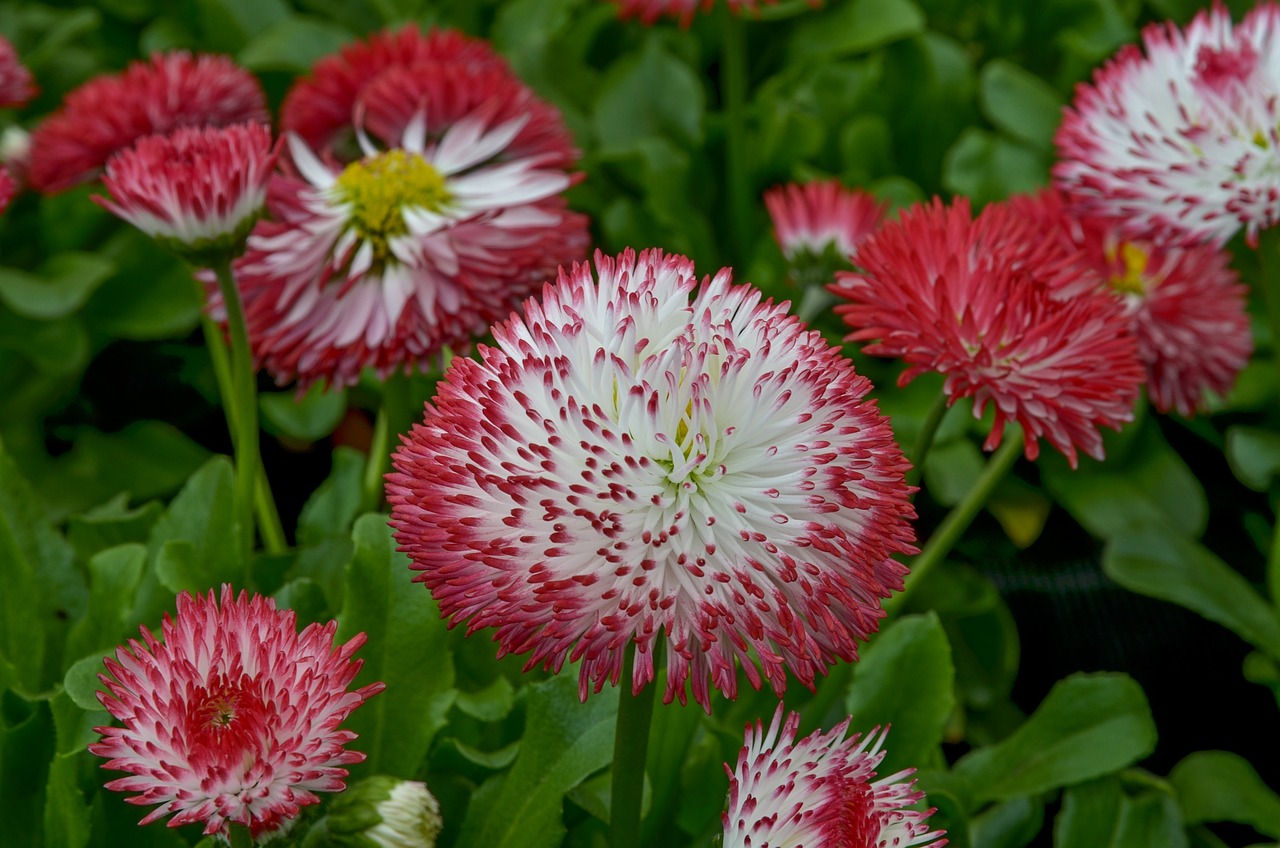
Color Variability
The world of natural plant dyes is a vibrant tapestry woven with countless hues and shades, each telling its own story through the colors it produces. One of the most fascinating aspects of using these dyes is their , which can be influenced by multiple factors, including the type of plant used, the time of harvest, and even the method of extraction. Imagine walking through a garden, where each plant not only serves a purpose but also acts as a palette waiting to be explored. This variability is not just a bonus; it's a core characteristic that makes natural dyes so appealing to artists and crafters alike.
For instance, the humble marigold can yield a bright yellow in the summer, but as the seasons change, it may produce a more muted, earthy tone in the fall. Similarly, indigo can create a deep blue that shifts to a lighter shade depending on the fermentation process used. This dynamic nature of plant dyes adds an element of surprise and excitement to any crafting project. You might start with a specific color in mind, only to find that the final product takes on an unexpected yet beautiful hue.
To give you a clearer picture, here’s a table showcasing some common plants and the colors they can produce:
| Plant | Color Range |
|---|---|
| Marigold | Bright Yellow to Earthy Orange |
| Indigo | Deep Blue to Light Sky Blue |
| Beetroot | Rich Red to Soft Pink |
| Avocado Pits | Soft Pink to Tan |
| Walnut Hulls | Dark Brown to Black |
This table is just a glimpse into the vast potential of colors derived from nature. The variability in shades allows for a unique expression in every project, making each piece truly one-of-a-kind. Additionally, the seasonal changes in plant life further enhance this variability. As plants grow and mature, their chemical compositions shift, leading to different dye outputs. So, if you’re looking to explore the rich world of natural plant dyes, remember that experimentation is key. Don’t be afraid to play around with different plants, methods, and even seasonal timings to discover the full spectrum of colors that nature has to offer!
The beauty of using natural dyes lies not just in their colors but also in the stories they tell. Each hue is a reflection of the earth and the seasons, offering a connection that synthetic dyes simply can't replicate. So grab your gardening gloves and dye pots, and let your creativity blossom!
- What are natural plant dyes?
Natural plant dyes are colors derived from various plants, including flowers, leaves, seeds, and roots. They are used in textile arts and crafts as eco-friendly alternatives to synthetic dyes. - Are natural dyes safe for the skin?
Most natural dyes are gentle on the skin, but it’s essential to test for sensitivities, especially if you have allergies. - How can I extract colors from plants?
You can extract colors by boiling the plant material in water, using mordants to help fix the color, and then dyeing your fabric or material. - Do natural dyes fade over time?
Yes, natural dyes can fade, especially if exposed to sunlight. However, proper care and storage can help maintain their vibrancy.
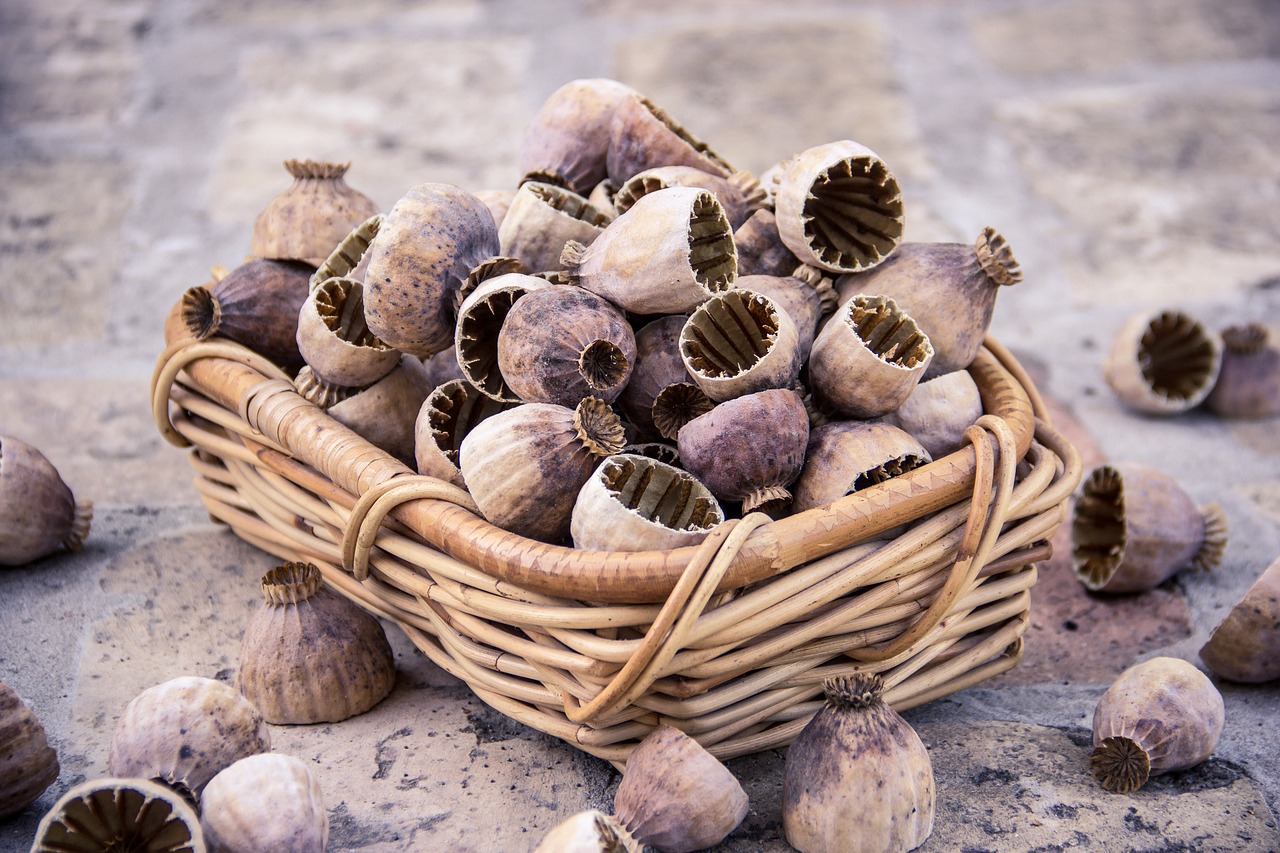
Seasonal Changes
One of the most fascinating aspects of using natural plant dyes is how they can transform with the seasons, offering a unique and dynamic palette that synthetic dyes simply cannot replicate. As the seasons change, so do the colors and availability of various plants, meaning that your dyeing projects can reflect the beauty of nature throughout the year. For instance, spring brings a burst of vibrant greens and soft pastels, while summer introduces deeper, more saturated hues. Autumn, on the other hand, can provide a stunning array of warm earth tones, and winter may offer muted shades that echo the season's tranquility.
Understanding how seasonal changes affect the dyeing process can elevate your gardening and crafting experience. For example, certain plants are only available during specific times of the year, which can limit or enhance your color choices. Here’s a quick breakdown of some popular plants and the seasons they thrive in:
| Plant | Season | Color Yield |
|---|---|---|
| Marigold | Summer | Bright Yellow |
| Goldenrod | Late Summer to Fall | Rich Gold |
| Black Walnut Hulls | Fall | Deep Brown |
| Indigo | Summer | Vibrant Blue |
Moreover, the maturity of the plant plays a crucial role in the dyeing outcome. Younger plants might yield lighter, more delicate shades, whereas fully matured plants can produce deeper and more intense colors. This variability not only adds an element of surprise but also encourages gardeners to engage more closely with their plants and the natural cycles they undergo.
As you explore the seasonal changes, consider how they can inspire your creative projects. You might find that dyeing with spring flowers evokes a sense of renewal, while autumn hues can bring warmth and nostalgia. It's like painting with nature's own brush, allowing you to capture fleeting moments in time through the colors you create.
Incorporating seasonal changes into your dyeing practices not only enhances your artistic endeavors but also deepens your connection to the environment. It reminds us that every season has its own unique beauty and that by embracing these changes, we can create something truly special and reflective of the world around us.
- What are natural plant dyes?
Natural plant dyes are colorants derived from plants, including flowers, leaves, roots, and fruits. They offer a sustainable alternative to synthetic dyes. - How do I prepare plant materials for dyeing?
To prepare plant materials, gather fresh or dried parts of the plant, chop them into smaller pieces, and simmer them in water to extract the dye. - Can I use natural dyes on all types of fabric?
Most natural dyes work well on natural fibers like cotton, wool, and silk, but results may vary depending on the material. - Are natural dyes safe for skin?
While many natural dyes are skin-friendly, it's best to conduct a patch test to ensure you don't have any allergies.
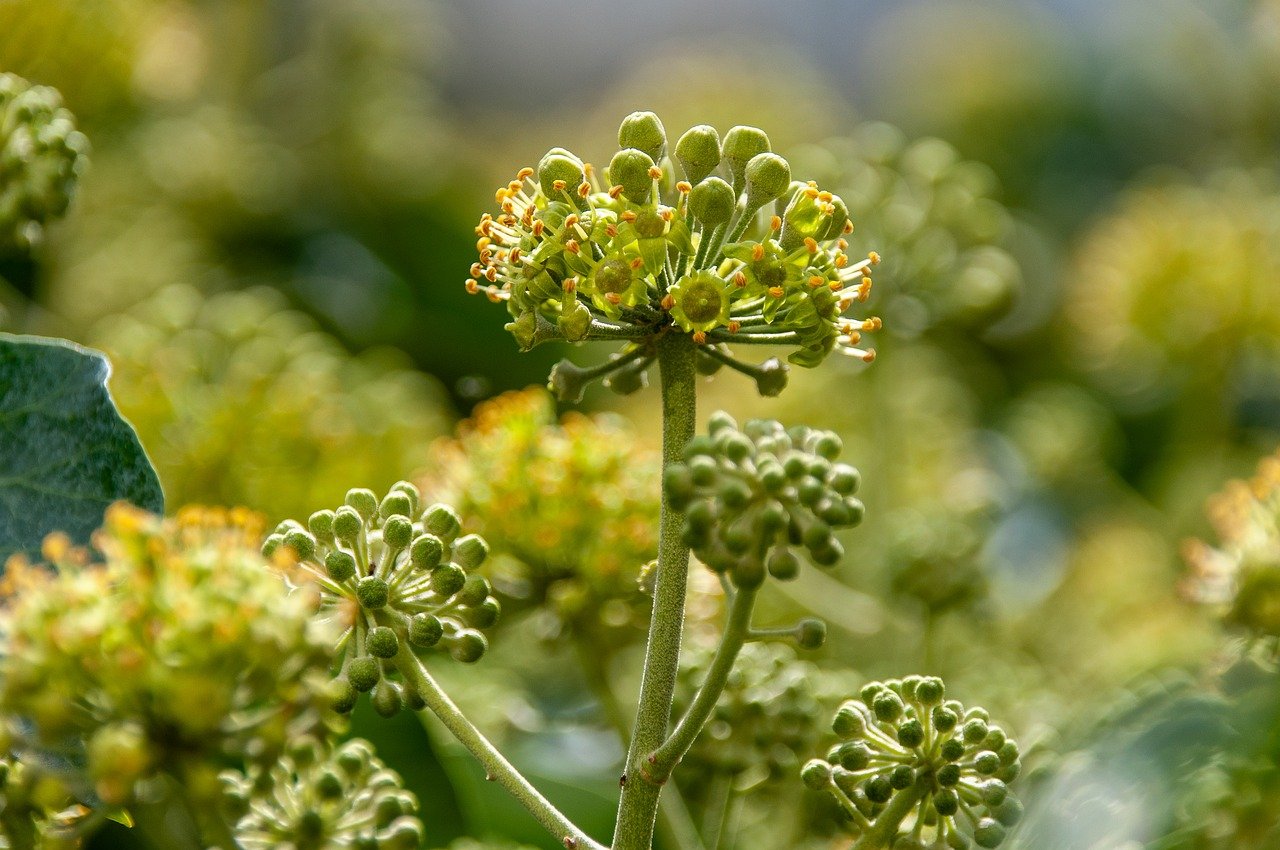
Creative Applications
When it comes to natural plant dyes, the possibilities are truly endless! These vibrant colors not only enhance your garden but also allow you to express your creativity in various artistic endeavors. Imagine stepping into your garden and harvesting plants that not only beautify your space but also provide you with stunning hues for your next crafting project. Whether you’re into textiles, home decor, or even artistic projects, natural dyes can elevate your creations to a whole new level.
One of the most exciting aspects of using plant dyes is their versatility. You can use them to dye fabrics for clothing, create unique wall hangings, or even craft beautiful table linens that tell a story of sustainability and creativity. For instance, using indigo from the leaves of the indigo plant can yield deep blues, while marigold flowers can produce bright yellows and oranges. This opens up a world of possibilities for your creative projects!
Additionally, natural dyes can be used in various mediums beyond fabric. Have you ever thought about how stunning a piece of art could look when painted with plant-based colors? You can create beautiful paintings or designs on paper using dyes extracted from plants like beets, which yield a lovely pink, or avocado pits, which can produce soft, muted tones. The tactile experience of working with these materials adds another layer of joy to the creative process.
Moreover, the process of dyeing itself can be a therapeutic and enjoyable experience. Imagine gathering friends or family for a fun dyeing party in your backyard, where everyone can experiment with different plants and techniques. You can even turn it into a fun educational experience for kids, teaching them about the plants and the colors they can create. This not only fosters a sense of community but also instills a love for nature and sustainability in the next generation.
To give you a clearer idea of how you can incorporate natural dyes into your creative projects, here’s a quick overview of some popular applications:
| Application | Examples | Plants Used |
|---|---|---|
| Textiles | Clothing, scarves, bags | Indigo, madder root, turmeric |
| Home Decor | Cushion covers, curtains, tablecloths | Marigold, onion skins, hibiscus |
| Art | Paintings, prints, sketches | Beets, avocado pits, black walnuts |
As you can see, the applications are as diverse as the colors you can create. The beauty of using natural dyes lies not just in their aesthetic appeal but also in the story they tell—one of connection to nature, sustainability, and creativity. So, the next time you’re in your garden, consider the myriad of ways you can transform those plants into something truly special.
- What plants can I use for natural dyes? Many common plants can be used, including marigolds for yellow, beets for pink, and indigo for blue.
- Are natural dyes safe for skin? Generally, yes! Most natural dyes are skin-friendly, but it’s always a good idea to do a patch test.
- How long do natural dyes last? Natural dyes can fade over time, especially when exposed to sunlight, but proper care can help maintain their vibrancy.
- Can I use natural dyes on all types of fabric? While many fabrics can be dyed, natural fibers like cotton, linen, and silk tend to absorb dyes better than synthetics.
Frequently Asked Questions
- What are natural plant dyes?
Natural plant dyes are colors derived from various plants, including roots, leaves, flowers, and fruits. Unlike synthetic dyes, these dyes are eco-friendly and often safer for both the environment and human health.
- How do I use natural plant dyes in my garden?
You can incorporate natural plant dyes by growing specific plants known for their dyeing properties, such as indigo, madder, or marigold. Harvest the plant materials and follow dyeing techniques to color textiles or crafts.
- Are natural dyes safe for sensitive skin?
Yes, many natural dyes are gentle on the skin, making them suitable for crafting and textile projects. However, it’s essential to test for allergies as some individuals may still react to specific plants.
- How can I test for sensitivity to natural dyes?
To test for sensitivity, conduct a patch test by applying a small amount of the dye to a discreet area of your skin. Wait 24 hours to see if any irritation occurs before using it more broadly.
- What are the environmental benefits of using natural dyes?
Using natural dyes promotes biodiversity, reduces chemical pollution, and supports sustainable gardening practices. By choosing local flora, you help maintain healthy ecosystems and minimize waste.
- Can I achieve different colors with the same plant?
Absolutely! The color you achieve from a plant can vary based on several factors, including the part of the plant used, the dyeing method, and even the season. This variability adds a unique charm to your projects.
- What creative applications can I explore with natural dyes?
Natural dyes can be used in a variety of creative projects, including textiles, home decor, and crafts. Whether you’re dyeing fabric for clothing or creating art pieces, the possibilities are endless!



















